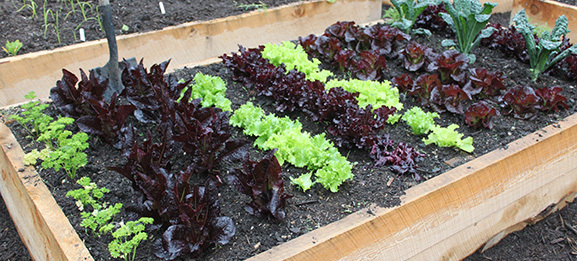As summer turns to autumn, it seems that the gardening season is coming to an end. Yet, there are plenty of tasks that can keep us busy in the garden - and give us a head-start on spring. I’m still sowing seeds for fall and winter crops and getting ready to plant garlic. I’m also adding a few new raised beds, planting spring-flowering bulbs, and over-seeding bare patches in my lawn. Here are five tasks to keep you busy this autumn.
Fill in the gaps
Ideally, a garden provides interest all year long - yes, even in winter! And if your garden has any seasonal gaps, you still have time to plant trees, shrubs and perennials. For spring interest, consider rhododendrons, fothergilla, or primulas. In summer, opt for long-blooming coneflowers, daylilies, or smokebush. Once autumn arrives, the hydrangeas and ornamental grasses take centre stage. And winter is for conifers, trees with interesting bark, and plants that have seeds or berries for the birds. Of course, there are often end-of-season sales at local garden centres so you can get a jump on spring while saving money!
Plant spring-flowering bulbs
It’s hard to think about spring when we have a long, cold winter to get through. But I find winter a little easier to bear when I know that I’ve planted spring-flowering bulbs like daffodils, crocus, and ornamental onions in my gardens. Ideally, plant bulbs in October and November, a few weeks before the ground freezes. Most are very easy to grow, just be sure to match the bulb to the site. If you have gardens beneath trees, plant shade-tolerant bulbs like glory-of-the-snow, snowdrops, and species daffodils. With more sun, you can grow spring stunners like tulips, ornamental onions, and hyacinths.
Plant garlic
Hardneck garlic can be planted in spring or fall, but for the largest bulbs, I plant in October. As with most food plants, garlic prefers a sunny garden bed with well-drained soil. Be sure to dig in some compost before planting. Garlic bulbs can be purchased from a local garden centre or farmers market, but don’t use garlic from your grocery store as it may have been sprayed and it’s likely softneck garlic which isn’t the right type to grow in Canada. When you’re ready to plant, break the bulbs into individual cloves and plant them two-inches deep and six-inches apart. Mulch the bed with six-inches of shredded leaves or straw before the ground freezes in late autumn to insulate the garlic over winter.
Give the lawn some TLC
Summer heat and drought can quickly damage a lawn, but once September arrives, the cooler temperatures and increased moisture means it’s time to repair and rejuvenate your grass. I like to aerate my lawn annually in mid to late September, using a core aerator to relieve compaction. This is followed by a thin application of fine compost which is raked across the lawn to loosely fill in the aeration holes. Any bare patches in the lawn are hard raked to remove dead grass, reseeded, and kept moist until the grass seed germinates. A few weeks before the ground freezes, I apply a fall lawn fertilizer to help support the root system and encourage early spring green up. And because I live in a region of Canada where our soil is acidic, I also lime my lawn in late autumn.

Build!
With fewer garden chores in autumn than spring, I find this is an ideal time to build new garden structures like raised beds, cold frames, and trellises. That way, when May arrives, I’m ready to plant! A raised bed is an easy way to grow food and flowers and offers many benefits. Raised beds drain well, allow you to plant in areas where existing soil may be poor, and they generally have fewer weeds. Beds can be built from untreated lumber like cedar or hemlock in a size to match your needs. Most of my raised beds are four-feet by eight-feet, which is a standard size.
